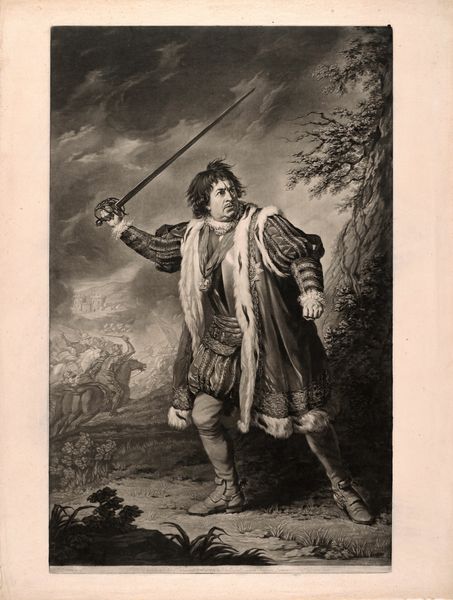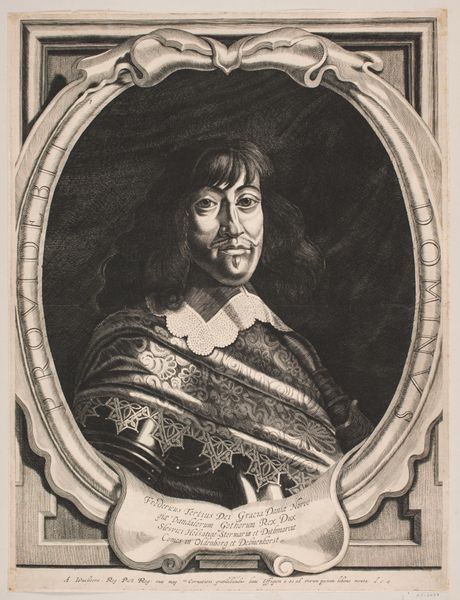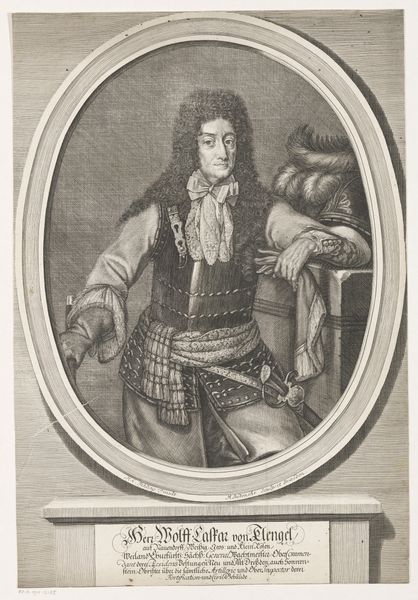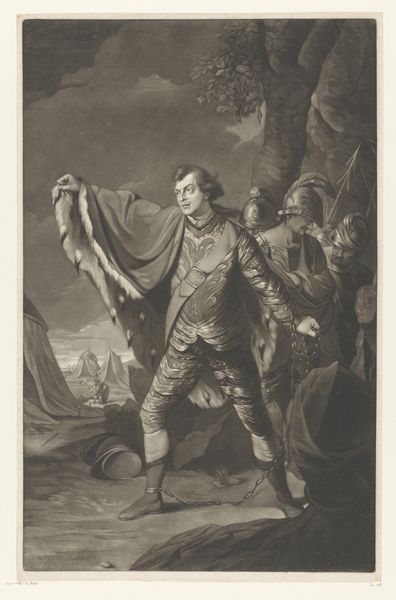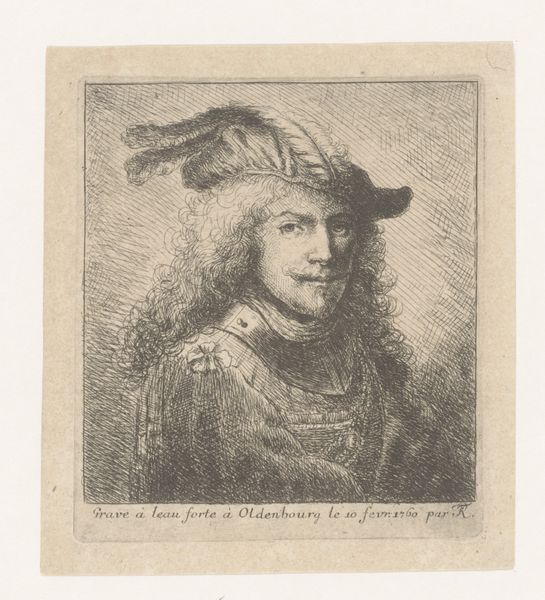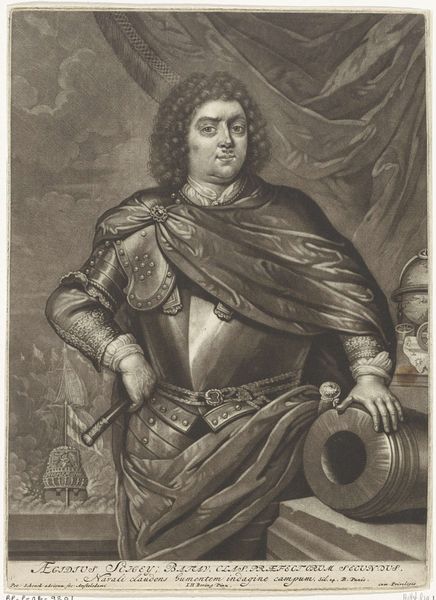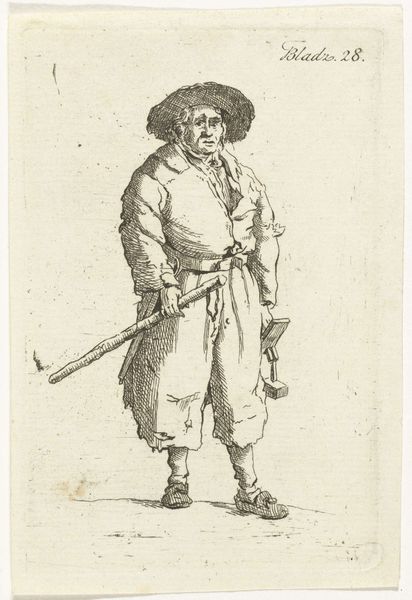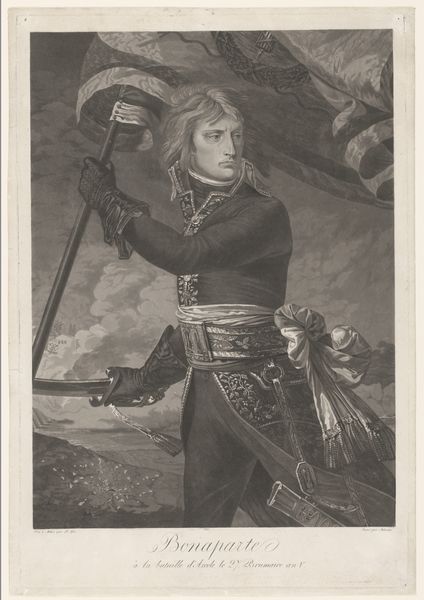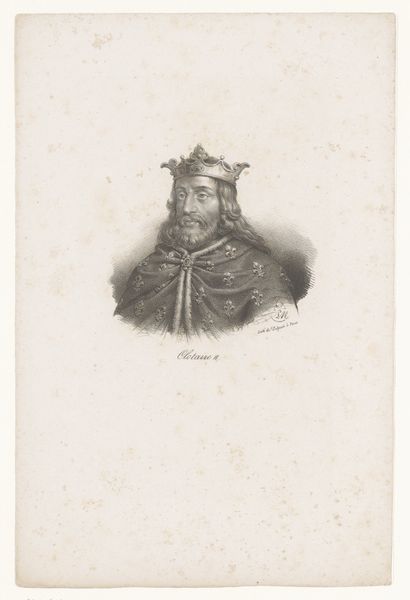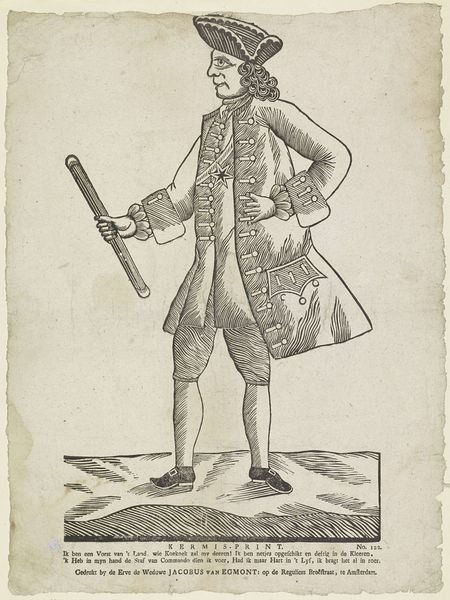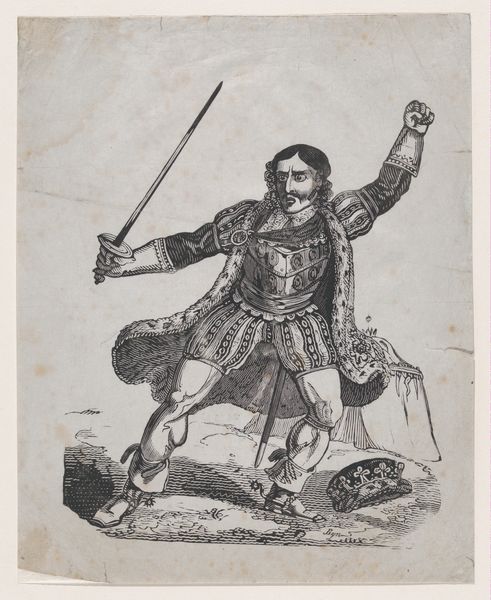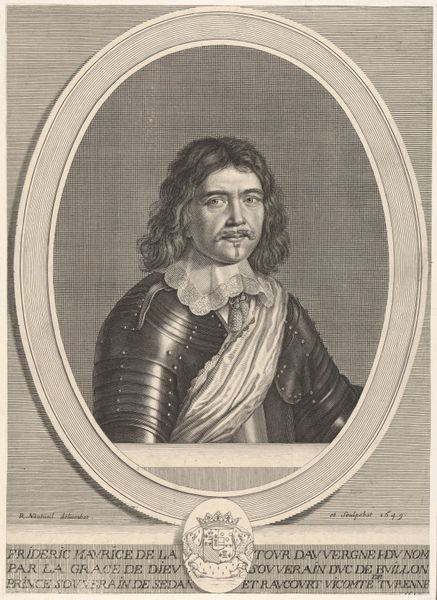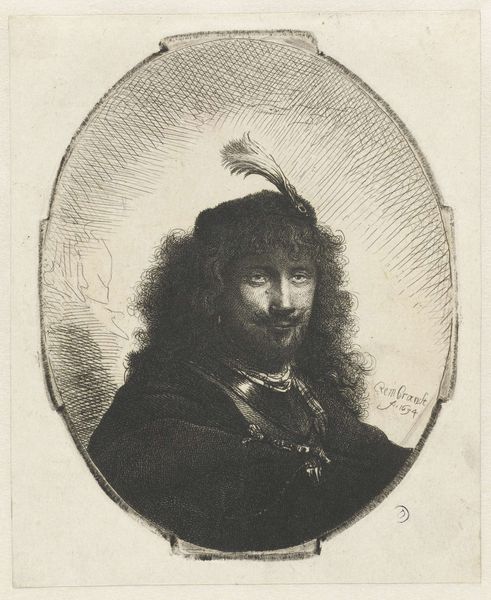
David Garrick as Richard III (Shakespeare, King Richard III, Act 5, Scene 8) 1825
0:00
0:00
drawing, print, graphite, charcoal
#
portrait
#
drawing
# print
#
charcoal drawing
#
romanticism
#
graphite
#
charcoal
#
history-painting
#
graphite
Dimensions: Sheet: 9 5/8 × 8 3/4 in. (24.4 × 22.2 cm)
Copyright: Public Domain
Editor: Here we have Samuel William Reynolds's "David Garrick as Richard III," created in 1825 using charcoal and graphite. The dramatic lighting and swirling charcoal marks really create a sense of impending doom. What do you see when you look at this piece? Curator: Immediately, I’m drawn to the stark contrast between the meticulously rendered figure and the more freely drawn, almost chaotic, background. Notice how Reynolds utilizes chiaroscuro to sculpt Garrick's face, emphasizing the tension and menace in his expression. Consider, also, the linear quality of the sword extending toward the upper edge – it cleaves the composition. Editor: It almost feels like the background is encroaching on the figure. Is that a conscious decision by the artist? Curator: Undoubtedly. Observe how the artist juxtaposes textures—the fur trim of the robe versus the blurred charcoal suggesting atmospheric turmoil. Reynolds constructs a pictorial space charged with dramatic intensity. What is the focal point in this print and how is this achieved? Editor: I’d say the face is the focal point because it’s the lightest part of the picture surrounded by darkness. Also, all those swirling marks point inward, and my eye follows that line right to Garrick's face. Curator: Precisely. And how might we interpret the artist's strategic use of light and shadow as it relates to conveying drama? The texture serves to heighten our awareness, doesn't it? Editor: I guess the chaotic background is a visual device, showing us Richard’s inner turmoil through purely formal means. That contrast highlights not just light and dark but control and chaos too. Curator: Yes, the opposition enlivens the surface by contrasting marks as the narrative emerges through pure line, tone, and texture. Editor: Thanks, seeing it as a study of pure form, rather than just illustration, gives me a new appreciation for the piece.
Comments
No comments
Be the first to comment and join the conversation on the ultimate creative platform.
